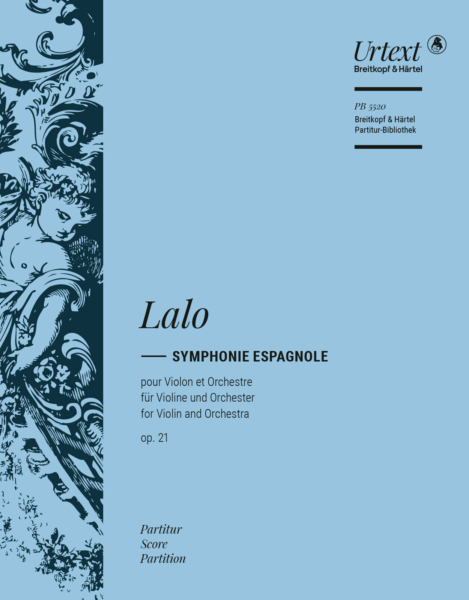Édouard Lalo (1823–1892) Symphonie espagnole op. 21
Urtext herausgegeben von Christian Rudolf Riedel [Vl,Orch] Dauer: 35'
Solo: Vl – Picc.2.2.2.2 – 4.2.3.0 – Pk.Schl – Hfe – Str
Erstmals klar die „Fassung letzter Hand“
Nachdem Sie die gewünschten Ausgaben in den Warenkorb gelegt haben, können Sie dort die benötigte Stückzahl bei Bedarf noch anpassen.
Édouard Lalos Symphonie espagnole war bislang unzulänglich ediert: die beiden Erstausgaben (Klavierauszug und Partitur) weichen erheblich voneinander ab, da der Komponist nach dem Abschluss der Stichvorlage des Klavierauszugs noch weiter an seinem Werk feilte und stellenweise sogar weiter komponierte. In der Urtext-Neuausgabe von Christian Rudolf Riedel sind all diese Widersprüche und Unzulänglichkeiten beseitigt. Zudem konnte der Herausgeber erstmals auf das bislang unbekannte Autograph der Solostimme zurückgehen. Der Fund dieser Quelle erwies sich als Sensation. Lalo, der selbst ein hervorragender Geiger war, hatte sein Manuskript minutiös bezeichnet unter Zuhilfenahme der Einrichtung Pablo de Sarasates, dem Lalo das Werk gewidmet und zur Uraufführung anvertraut hatte. Mit dieser neuen Quellenlage konnte eine Urtext-Ausgabe entstehen, die durchgängig der Fassung letzter Hand entspricht. Der mitunter particell-ähnliche Klaviersatz des Komponisten wurde vom Herausgeber revidiert, spieltechnisch vereinfacht und um die in der Einleitung zum fünften Satz bisher fehlenden zehn Takte ergänzt.
„Es ist im bei Breitkopf schon gute Tradition, dass von gewichtigen neuen Urtext-Ausgaben nicht nur Dirigentenpartitur und Stimmen erscheinen, sondern nach einiger Zeit auch eine wohlfeile Studienpartitur erhältlich ist, bei der man kaum auf etwas verzichten muss.“ (Michael Kube, Schweizer Musikzeitung)
| 1. Allegro non troppo |
| 2. Scherzando: Allegro molto |
| 3. Intermezzo: Allegro non troppo |
| 4. Andante |
| 5. Rondo: Allegro |










 Blättern
Blättern